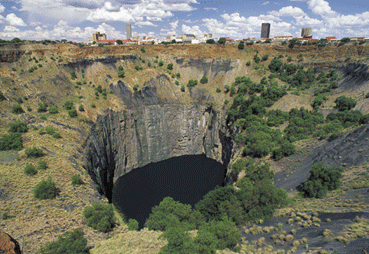
 |
 |
 |
 |
 |
 |
 |
 |
 |

Gold & Diamonds The discovery of diamonds north of the Cape in the 1860s brought tens of thousands of people to the area around Kimberley. In 1871, Britain annexed the diamond fields. Independent African chiefdoms were systematically subjugated and incorporated. The most dramatic example was the Zulu War of 1879,which saw the Zulu State brought under imperial control, but only after King Cetshwayo’s impis inflicted a celebrated defeat on British forces at Isandlwana. The discovery of the Witwatersrand goldfields in 1886 was a turning point in the history of South Africa. The demand for franchise rights for English-speaking immigrants working on the new goldfields was the pretext Britain used to go to war with the Transvaal and Orange Free State in 1899. The Boers initially inflicted some heavy defeats on the British but eventually the might of imperial Britain proved too strong for the guerrilla bands and the war ended in 1902. Britain’s scorched-earth policy included farm burnings and the setting up of concentration camps for non-combatants in which some 26 000 Boer women and children died. The incarceration of black (including coloured) people in racially segregated camps has been absent in conventional accounts of the War and has only recently been acknowledged. (*Source : Pocket Guide to South Africa 2004) |
|||||||||

